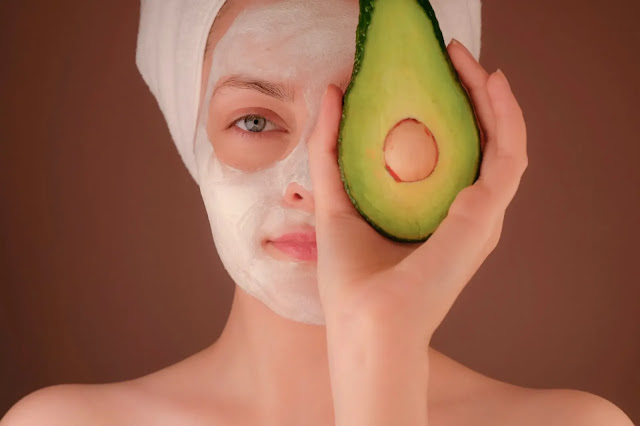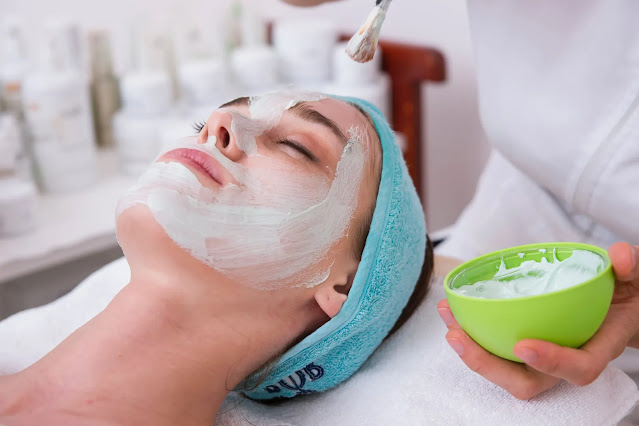Skin Care Routine Order: A Step By Step Guide
Having healthy, glowing skin is a common goal for many people. Achieving it, however, can be overwhelming and confusing. With so many products and techniques available, it's difficult to know where to begin. In this complete guide to skin care, we'll break down the basics of building a skin care routine, from cleansing to moisturizing and everything in between.
How to Build a Skin Care Routine
The foundation of any good skin care routine is consistency. You'll want to establish a routine that you can stick to every day. This doesn't mean you need to use a lot of products, but it does mean that you should be diligent in your approach.
The four basic steps of a skin care routine are cleansing, toning, treating, and moisturizing. We'll go through each of these steps in detail.
Cleansing — Washing Your Face
Cleansing is the first step in any skin care routine. This step removes dirt, oil, and makeup from your skin, allowing the other products you use to be more effective. Cleansing should be done twice a day, in the morning and at night.
When choosing a facial cleanser, it's important to consider your skin type. If you have oily skin, you'll want to look for a cleanser that is designed to remove excess oil. If you have dry skin, you'll want a gentle cleanser that won't strip your skin of its natural oils.
Find Your Facial Cleanser
There are many types of facial cleansers available, including foaming cleansers, cream cleansers, and oil cleansers. Foaming cleansers are great for oily skin types, as they help to remove excess oil and dirt. Cream cleansers are ideal for dry skin, as they help to hydrate the skin while cleansing. Oil cleansers are suitable for all skin types, but are particularly effective at removing makeup and sunscreen.
What Does Non-Comedogenic Mean Exactly?
Non-comedogenic is a term used to describe products that are formulated to not clog pores. If you have acne-prone skin, it's important to look for products that are non-comedogenic, as clogged pores can lead to breakouts.
Toning — Balancing the Skin
Toning is the second step in a skin care routine. This step helps to balance the skin's pH levels and prepare it for the other products you'll be using. Toners can also help to remove any remaining dirt and oil that your cleanser may have missed.
How to Use Toner?
To apply toner, simply pour a small amount onto a cotton pad and gently sweep it over your face and neck. Avoid the eye area, as toners can be irritating to the delicate skin around the eyes.
Alpha and Beta Hydroxy Acids
Alpha and beta hydroxy acids (AHAs and BHAs) are chemical exfoliants that can help to brighten the skin and reduce the appearance offine lines and wrinkles. AHAs are water-soluble and work on the surface of the skin, while BHAs are oil-soluble and can penetrate deeper into the pores. AHAs are best for dry or sun-damaged skin, while BHAs are ideal for oily or acne-prone skin.
Hyaluronic Acid
Hyaluronic acid is a humectant that helps to hydrate the skin by attracting and retaining moisture. It's a popular ingredient in many skin care products, particularly moisturizers and serums. Hyaluronic acid is suitable for all skin types and can help to plump up fine lines and wrinkles.
Rose Water and Green Tea
Rose water and green tea are two natural ingredients that can be beneficial for the skin. Rose water has anti-inflammatory properties and can help to soothe irritated skin. Green tea is rich in antioxidants and can help to protect the skin from environmental damage.
Vitamin E and C
Vitamin E and C are two powerful antioxidants that can help to protect the skin from free radical damage. Vitamin E is a fat-soluble vitamin that helps to moisturize the skin and improve its texture. Vitamin C is water-soluble and helps to brighten the skin and reduce the appearance of dark spots.
What is Toner?
Toner is a liquid that is applied to the skin after cleansing and before moisturizing. It helps to balance the skin's pH levels and prepare it for other products. Toners can alsohelp to reduce the appearance of pores and improve skin texture.
Treating with Serums
Serums are concentrated formulas that contain active ingredients designed to target specific skin concerns. They are typically applied after toning and before moisturizing.
Types of Skin Serums
There are many types of skin serums available, each with its own set of benefits. Some common types of serums include:
Vitamin C serums: These serums help to brighten the skin and reduce the appearance of dark spots.
Retinol serums: These serums contain a derivative of Vitamin A and can help to reduce the appearance of fine lines and wrinkles.
Hydrating serums: These serums contain humectants like hyaluronic acid and can help to hydrate the skin.
Antioxidant serums: These serums contain antioxidants like Vitamin E and can help to protect the skin from free radical damage.
Moisturizing — Hydrating and Softening the Skin
Moisturizing is the final step in a skin care routine. This step helps to hydrate and soften the skin, leaving it looking plump and healthy.
How to Pick a Moisturizer
When choosing a moisturizer, it's important to consider your skin type. If you have oily skin, you'll want a lightweight moisturizer that won't leave your skin feeling greasy. If you have dry skin, you'll want a richer moisturizer that will help to hydrate your skin and prevent it from becoming flaky and tight.
The Difference Between a Day and Night Cream
Day creams are typically lighter and contain SPF to protect the skin from UV rays. Night creams, on the other hand, are typically richer and contain ingredients that help to repair and regenerate the skin while you sleep.
Eye Creams, Explained
Eye creams are specially formulated to address the delicate skin around the eyes. This area is prone to wrinkles and fine lines, as well as puffiness and dark circles. Eye creams can help to hydrate the skin, reduce the appearance of fine lines and wrinkles, and brighten the under-eye area.
Acne Treatment
Acne is a common skin concern that can be caused by a variety of factors, including hormonal changes, stress, and diet. There are many products available that can help to treat and prevent acne, including spot treatments and retinoids.
Use Spot Treatment
Spot treatments are products that are applied directly to pimples and acne-prone areas. They typically contain ingredients like salicylic acid or benzoyl peroxide, which can help to reduce inflammation and kill bacteria.
Apply Retinoid
Retinoids are derivatives of Vitamin A that can help to unclog pores and reduce the appearance of fine lines and wrinkles. They are available in both prescription-strength and over-the-counter formulations.
How to Pick a Moisturizer
When choosing a moisturizer for acne-prone skin, it's important to look for a product that isoil-free and non-comedogenic. This will help to prevent clogged pores and breakouts.
Protect with Sunscreen
Sunscreen is a crucial step in any skin care routine. It helps to protect the skin from harmful UV rays that can cause sun damage, premature aging, and even skin cancer.
Decoding Sunscreen Formulas
Sunscreen formulas can be confusing, but it's important to understand the differences between them in order to choose the right one for your skin. There are two types of sunscreen: physical and chemical.
Physical sunscreens contain ingredients like zinc oxide and titanium dioxide, which create a physical barrier on the skin that reflects UV rays. Chemical sunscreens, on the other hand, contain ingredients like avobenzone and octinoxate, which absorb UV rays and convert them into heat.
Sunscreen Application 101
To apply sunscreen, start by choosing a product with an SPF of at least 30. Apply it generously to all exposed areas of the skin, including the face, neck, and hands. Reapply every two hours, or more often if you are sweating or swimming.
Apply Face Oil
Face oils are a popular addition to many skin care routines. They can help to hydrate and nourish the skin, as well as provide additional benefits like antioxidant protection and anti-inflammatory properties.
When choosing a face oil, it's important to consider your skin type. If you have oily skin, you'll want to look for a lightweight oil that won't clogyour pores. If you have dry skin, you'll want a richer oil that will help to hydrate and soften your skin.
Skin Care Frequently Asked Questions(FAQs)
How often should I exfoliate?
Exfoliation should be done once or twice a week, depending on your skin type. If you have sensitive skin, you may want to exfoliate less often to avoid irritation.
Can I use the same products in the morning and at night?
While some products can be used both in the morning and at night, like moisturizers, others should only be used at certain times. For example, retinoids are typically used at night, as they can make the skin more sensitive to sunlight.
Can I use multiple serums at the same time?
Yes, you can use multiple serums at the same time. However, it's important to layer them in the correct order to ensure that they are effective. Start with the thinnest serum and work your way up to the thickest.
Do I need to use a toner?
While toner is not essential, it can be beneficial for some skin types. Toners can help to balance the skin's pH levels, reduce the appearance











0 Comments